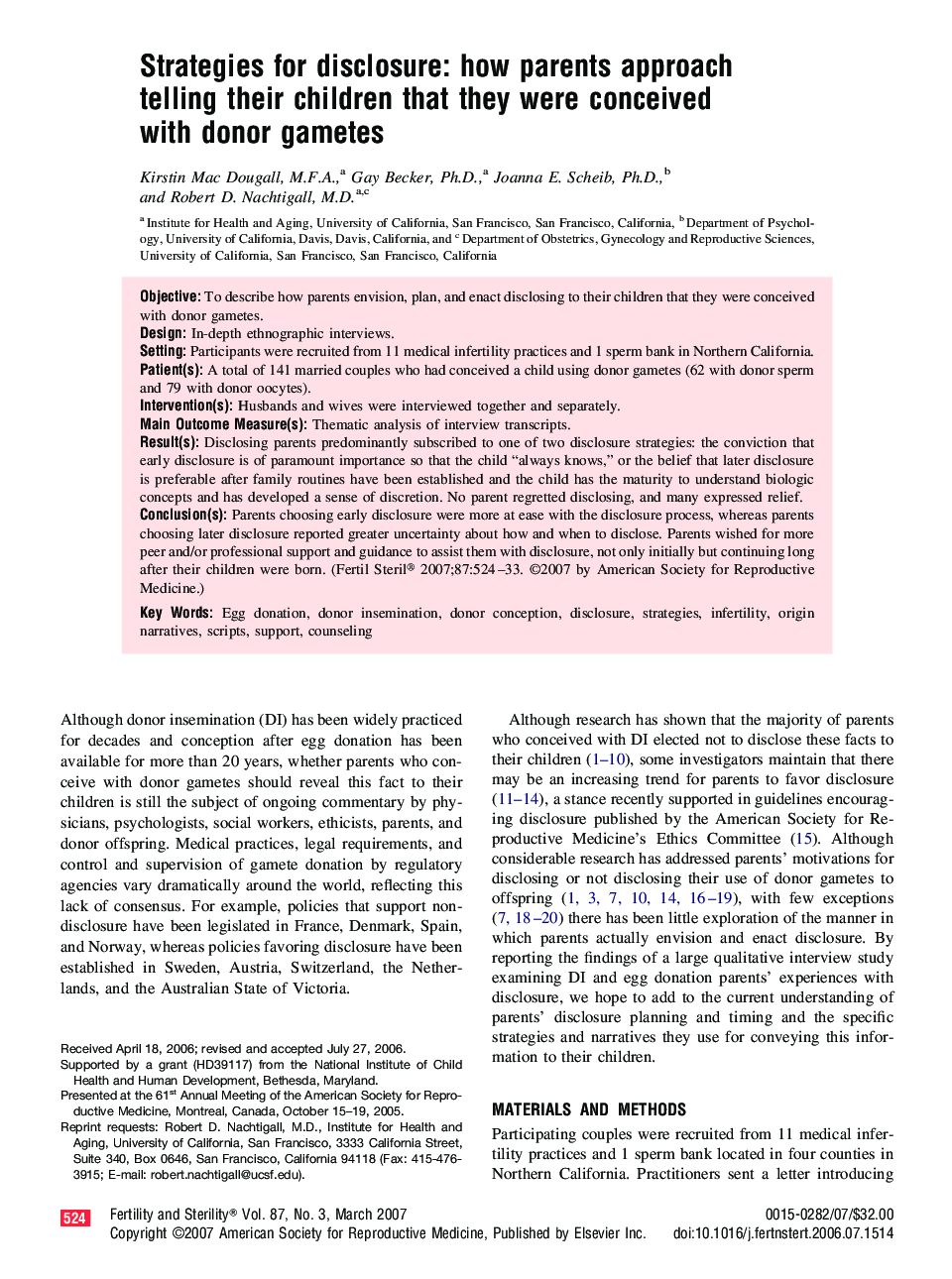| Article ID | Journal | Published Year | Pages | File Type |
|---|---|---|---|---|
| 3940140 | Fertility and Sterility | 2007 | 10 Pages |
ObjectiveTo describe how parents envision, plan, and enact disclosing to their children that they were conceived with donor gametes.DesignIn-depth ethnographic interviews.SettingParticipants were recruited from 11 medical infertility practices and 1 sperm bank in Northern California.Patient(s)A total of 141 married couples who had conceived a child using donor gametes (62 with donor sperm and 79 with donor oocytes).Intervention(s)Husbands and wives were interviewed together and separately.Main Outcome Measure(s)Thematic analysis of interview transcripts.Result(s)Disclosing parents predominantly subscribed to one of two disclosure strategies: the conviction that early disclosure is of paramount importance so that the child “always knows,” or the belief that later disclosure is preferable after family routines have been established and the child has the maturity to understand biologic concepts and has developed a sense of discretion. No parent regretted disclosing, and many expressed relief.Conclusion(s)Parents choosing early disclosure were more at ease with the disclosure process, whereas parents choosing later disclosure reported greater uncertainty about how and when to disclose. Parents wished for more peer and/or professional support and guidance to assist them with disclosure, not only initially but continuing long after their children were born.
